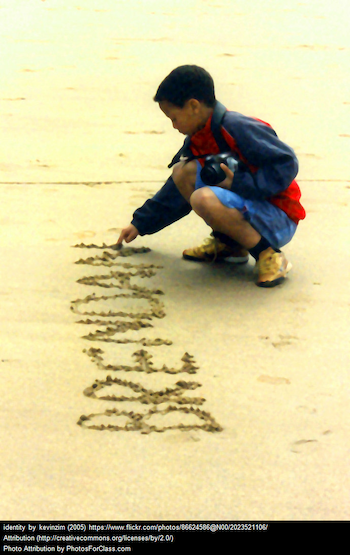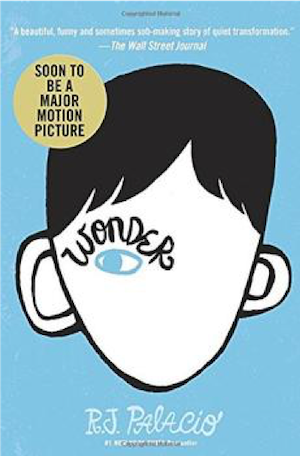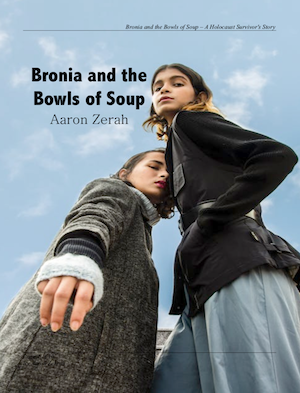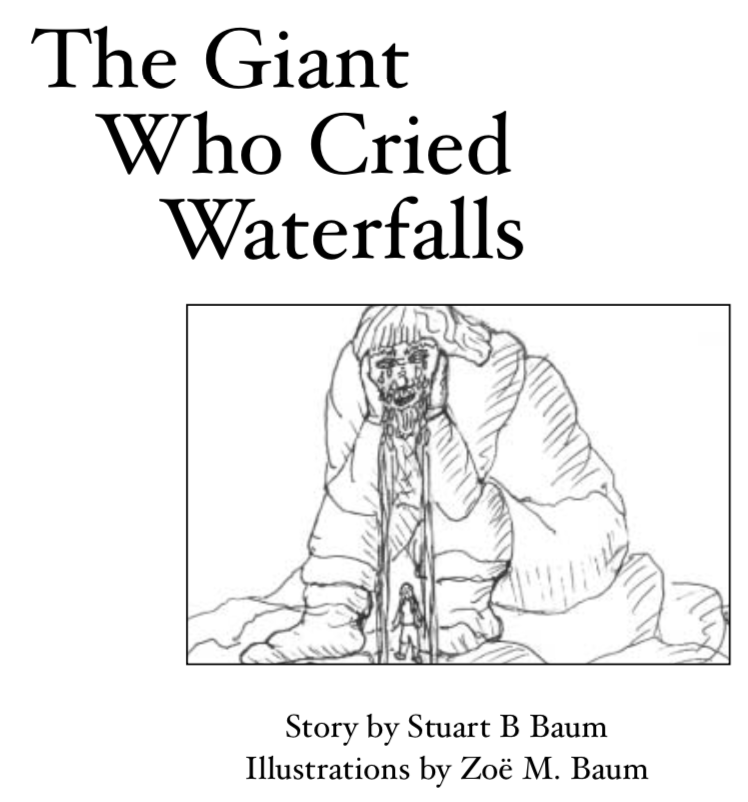2.1 Read About Positive Personal and Cultural Identity Through Stories
| Site: | Cowichan Valley School District - Moodle |
| Course: | ELA6, CSS, Sferrazza |
| Book: | 2.1 Read About Positive Personal and Cultural Identity Through Stories |
| Printed by: | Guest user |
| Date: | Wednesday, 31 December 2025, 7:16 PM |
Table of contents
- Introduction
- Preview
- 2.1A Wonder - Personal Identity
- 2.1B Each Kindness - Character Study
- 2.1C Bronia and the Bowls of Soup - Cultural Identity
- 2.1D Genres
- 2.1E The Giant Who Cried Waterfalls - Part One - Setting & Character
- 2.1F The Giant Who Cried Waterfalls - Part Two - Personal Values
- 2.1G End of the Line - Plot
- 2.1H Storytelling and Culture
- 2.1I Deeper Thinking: Drawing Conclusions
Introduction
Since the beginning of time, why have we told stories?
Stories help us understand ourselves, our culture, and the cultures of others. Perhaps more importantly, stories that are shared with others bring us all closer together as we realize three important facts:
- We all have common experiences that make us the same
- We tell stories from different viewpoints and experiences, and until we all have the whole picture, we will never understand each other.
- Understanding each other leads to more positive understandings, more empathy, and kindness.
As you explore the personal and cultural identity of characters in stories, you will also think about your own personal and cultural identity. How does your family history, heritage, and life experiences impact your identity? Your stories?
Preview
 Get ready to learn by thinking about this:
Get ready to learn by thinking about this:
One shared experience that we all have is learning about ourselves. Our stories have many elements in common and help to teach important life lessons. Through stories, we can understand our own personal identity and cultural identities.
What is important to you? What makes your heart sing? How do you show the kind of person you are? What stories does your family or cultural heritage pass down?
So how does personal and cultural identity impact actions and how people see and treat others?
What has shaped your personal and cultural identity?
2.1A Wonder - Personal Identity
 Your personal identity is who you are, the way you think about yourself, the way you are viewed by the world, and the characteristics that define you. Are you ordinary? What is not "ordinary" about you? What makes you unique? What do you like about yourself? If you could change one thing, what would it be?
Your personal identity is who you are, the way you think about yourself, the way you are viewed by the world, and the characteristics that define you. Are you ordinary? What is not "ordinary" about you? What makes you unique? What do you like about yourself? If you could change one thing, what would it be?
Personal identities are often explored through narrative text - better known as stories.
As you explore the first story (or excerpt from a story) in this unit, think about:
- How the character's identity is revealed?
- How does the main character see himself?
- How does his sister, Via, see him?
- What is ordinary about him?
- What is not ordinary?
 |
After you read the text, complete the activity in your Learning Guide. CLICK HERE for the story except. |
2.1B Each Kindness - Character Study
Every story has characters. Characters can be people, animals, or even objects. How do we learn about a character's personal identity?
- By what they say
- By their actions
- By what they think
- By what other characters say about them
- How other characters react to them
We can learn their internal traits (feelings, personality, gender expression) and external traits (appearance – height, hair, etc, / actions – rock collector, soccer player, bully) - traits make up their personal identity.
Some characters develop and change, often because they learn a lesson. These characters are called DYNAMIC characters.
Watch this video to learn more about character traits and character development.
You are going to explore the award-winning story, "Each Kindness". Notice the powerful anti-bullying message and amazing art. The main characters are Chloe and Maya. Chloe and her friends won't play with the new girl, Maya. Every time Maya tries to join Chloe and her friends, they reject her. Eventually Maya stops coming to school.
As you listen to the story, pay attention to Maya and Chloe. What are their traits? What evidence shows this? What lessons are learned? You will be asked to identify character traits in your Learning Guide and to give evidence from the story that shows the traits you choose. Can you figure out which character is a dynamic character? (This means it is a character who changes as a result of the events in the story.)
Something to think about: What is something you did or said in the last 24 hours that shows something about what kind of person you are? What does it show or tell us about your personal identity?
 |
Complete the activity in your Learning Guide. |
2.1C Bronia and the Bowls of Soup - Cultural Identity
A narrative is a story about something that happened in the writer's life. Sometimes, narratives give clues about a person's cultural identity.
Everyone has a cultural identity. Knowing where you come from can give you a sense of belonging and a sense of self. People are shaped by certain aspects of each of the cultures they belong to or come from. Often, cultural identity comes from family background and beliefs. For some people, culture is more about the families they create or grow up in rather than birth heritage.

You can learn a lot about your cultural identity by speaking with your own family - whether it is birth family or another form of family that you live with and spend time with. Culture, like kindness, can spread from one generation to the next.
Bronia and the Bowls of Soup
The following story is about a piece of the author's history and based on a real event that happened in history - World War II and the holocaust. It has some really sad parts, but the person telling the story, Bronia, has some happy things happen in her life when the holocaust is over.
The Holocaust is one of the most terrible events in human history. It occurred during World War II when Hitler was leader of Germany. Six million Jewish people were murdered by the Nazis. This included as many as 1 million Jewish children. Millions of other people that Hitler didn't like were killed as well. This included well-educated people, Polish people, Catholics, Serbs, gay people, and handicapped people. It is thought that the Nazis murdered as many as 17 million innocent people.
 |
CLICK HERE for the narrative. After you read the text, complete the activity in your Learning Guide.
|
2.1D Genres
Stories of all kinds help us to better understand people and cultures, and even to understand ourselves. There are many different genres of fiction. In this lesson, you will learn about some of the popular forms, but there are many more.
Also, it is important to note that although some books and short stories are clearly only dedicated to one genre, there are some that are a mixture of genres.
 |
As you read about genres, complete the activity in your Learning Guide. CLICK HERE for the text. After you've completed your learning guide, check your answers: CLICK HERE. |
 |
When you feel ready, the next step is to take the |
2.1E The Giant Who Cried Waterfalls - Part One - Setting & Character

In this lesson (parts one and two), you will read and respond to a story called, "The Giant Who Cried Waterfalls".
Does the title and the cover picture help you to guess the genre? What clues do they give?
What genre do you predict fits this story: realistic, historical, adventure, mystery, fantasy, science fiction, humour, or folktale/traditional?
Setting
Stories usually start by introducing the setting and the main characters. Setting is the WHERE and WHEN a story takes place and the resulting ATMOSPHERE.
1. The location of the story - The author usually describes the setting(s) in a story with lots of detail. This helps the reader really picture the scene.
- In a big city near the border between British Columbia and the United States, in the back alley, on a distant planet, etc.
2. The time of the story - The time when a story takes place affects many things. If the story were to take place in the early 1800s, for instance, then everything the characters do, wear, say, and how they live must match the time period.
- A long time ago, today, 2050, during a war, in the future...
3. The mood or atmosphere of the story (which is reflected in the setting) - Is it a happy place? A sad place? A scary place?Authors carefully choose their settings in order to create a certain mood.
- Frightening: a story set in a haunted house on a dark, stormy night.
- Peaceful and relaxing: a tropical island with a gentle breeze and waves lapping against the shore.
Skillful writers often take you through many different moods as they tell their story. Click on the location, time, and atmosphere to learn more about these aspects of setting.
Now, read the beginning of the story.
First reading:
- Try to get the "gist" of the text - a sense of what it is about and a sense of how it may be read.
- Try to make a picture in your mind of what is happening.
- Ask yourself questions.
- Stop and predict what you think will happen next.
- Look for big ideas!
- What do you find out about the setting?
This story starts most of the way up a tall mountain.
To get there, we have to first take a plane halfway around the world. Then we have to take a long train ride, of about five hours, to the bottom of a large mountain range. That’s as far as the train goes, so we have to take a bus from that town to an even smaller town. It’s not that far, but the roads are so winding and so thin that we have to stop to wait for cars, carts, other buses, and frequently sheep and goats to go past before we can continue on our way. Finally, we arrive at a smaller town at the bottom of the mountain.
Look up the mountain. Towards the top, you can see a small village with perhaps fifteen houses and two larger buildings. That’s the village we need to get to. You can’t see the very top of the mountain. It’s above the clouds.
Before we travel up, take a good look at the mountain. See how the pine trees get smaller and smaller as they get closer and closer to the village? See how the mountain becomes more rocks than trees as you look past the village? It’s almost all boulders and crags as it disappears into the clouds.
See the village? All the houses and the two larger buildings are built in a semi-circle around a small lake. Now, take a good look at that lake. You’d expect a mountain lake to be bright blue like the sky, but it’s greyer and milkier than that.
But here’s what you really need to see. Look behind the lake. Notice the two thin lines of water running up the mountain and disappearing into the clouds? These are two thin waterfalls, which, of course, travel down from the top of the mountain and into the lake. They’re quite beautiful, these two thin waterfalls. They’re also magic, or so many people think. That’s why so many people go to the lake to cure their aches and pains, among other things. And they pay good money to do this. In fact, many of the people in the village earn their living from the money people pay to bathe in and drink this lake water.
~~~~
Are you ready to walk up? It’s a long, long walk. But it’ll be worth it; you’ll see.
 |
Second reading: This is usually a slower read, where you try to understand the text better. As you read, find and record examples of Complete the "Setting" activity in your Learning Guide. Go back and reread for more details, if needed. Then, return to this lesson. |
You are about to meet Bonnie, a nine year old from the village. She has to make some tough decisions and even goes against her parents very strict directions. What do you think of Bonnie? Would you have made the same choices? What do her words, thoughts, and actions tell us about her?
Read from page 4 to the middle of page 7, paying close attention to what and how we learn about Bonnie. Then, complete the character analysis activity. You will read the next story in part two of this lesson.
 |
Click here for the story: The Giant Who Cried Waterfalls by Stuart Baum. Read pages 4-6. Complete the "Character Analysis" activity in your Learning Guide. |
2.1F The Giant Who Cried Waterfalls - Part Two - Personal Values
 Values are standards that motivate you to act as you do and by which you judge behaviour (both yours and others). Values signify what is important and worthwhile to each person or group of people. Individuals have their own values based on many aspects of their personal and cultural identity, including family, religion, peers, culture, social background, gender, experiences, etc. Values should always result in choices that are respectful of other peoples values and choices and not prejudiced against others based on race, wealth, personal situations, gender, or sexual orientation.
Values are standards that motivate you to act as you do and by which you judge behaviour (both yours and others). Values signify what is important and worthwhile to each person or group of people. Individuals have their own values based on many aspects of their personal and cultural identity, including family, religion, peers, culture, social background, gender, experiences, etc. Values should always result in choices that are respectful of other peoples values and choices and not prejudiced against others based on race, wealth, personal situations, gender, or sexual orientation.
Before continuing the story, think about your own values. Which values are most important to you, based on your personal and cultural identity? Read the list below and choose your top five.
1. Being an honest person
2. Being adventurous
3. Continuing to learn and gain knowledge
4. Helping others (especially sick, disadvantaged, lonely, or elderly)
5. Being nice looking
6. Following the faith of my family
7. Equal opportunity for all people
8. Accomplishing something that helps the world
9. Persevering without giving up easily
10. Respecting diversity and the right for people to choose their own beliefs, personal identities, and ways of living (as long as they are not hurting others and within the human rights code).
11. Looking out for myself
 |
Complete the Personal Values and Choices activity in your Learning Guide. Then, return to this online lesson. |
When we left off in the story, "The Giant Who Cried Waterfalls", Bonnie had disobeyed her parents by going to the top of the mountain. In real life, this could have turned out quite badly for her. Thankfully, it is "just a story". It does tell us, though, that Bonnie seems to value being adventurous more than she values being an honest person.
As you read the remainder of the story, think about what "Bonnie's Top Five Value List" would have on it. You will create a list for her and support your choices with evidence from the story.
Click here for the story: The Giant Who Cried Waterfalls by Stuart Baum.
 |
Complete the "Bonnie's Top Five Value List" activity in your Learning Guide. As you reread, find and record evidence that shows that Bonnie has the values you chose for your top five list. |
2.1G End of the Line - Plot
The plot is the series of events that happen in the story.
Plot is broken down into the following stages:
Exposition: introduces you to the characters, setting, and problem
Rising Action: all the events that build up to the climax, there is growing conflict that creates suspense
Climax: the turning point and the most exciting part of the story
Falling Action: shows the aftermath after the conflict and loose ends are tied up
Resolution: the ending of the story
Watch the video below.
Perhaps you remember the three little pigs story. Click on the image to see at the plot structure:
All of the stories we've read so far have people who show great kindness. What could kindness have to do with a bank robber? Before delving into the story, try to imagine life with no phone. How would life be different?
Next, look at the cover of the book. What impressions does the cover give you? (CLICK HERE)
Frank and Liza, the main characters, discover their post office has the first phone in town and Liza is desperate to earn the 5 cents she needs to use the phone. This leads them on a suspenseful adventure - something to do with the beady-eyed Zedekiah Smith, a bank robber.
On your first read, read the story from beginning to end to get the gist of how their adventure unfolds. Begin to understand the characters, setting, problem, and solution.
 |
On your second read, complete the activities in your Learning Guide. |
2.1H Storytelling and Culture
Culture is shared through a peoples stories. Stories that have been passed on for generations, even before they were written down, have many lessons and teachings that are important to a culture and help to pass on a positive cultural identity. Stories contain some of the most important, well said, and beautifully told advice. Around the world, there are stories that teach lessons about how to behave, about taking care of each other, about how to treat nature, about respecting our elders, and more. We should treasure the simple lessons in stories, because they always apply.
In some communities, there are items of great traditional importance. Legends that have been handed down from the past often explain items or events with special meaning. These legends are generally thought to have some truth to them, but because they happened so long ago, they cannot be proven.
Stó:lō is the Halqemeylem word for "river". The Stó:lō are the river people, a group of First Nations peoples in the Fraser Valley and lower Fraser Canyon of British Columbia, Canada - land in and around Fort Langley, Chilliwack, Hope, and Yale. The Stolo people never had a written language. Story telling has been the way their history, culture, and important lessons have been handed down from generation to generation. Learn more about their story telling in the following video. As you listen, find out the role of stories.
Then, listen to a short story as you watch the next video. Listen and watch to find out:
- What were the young boys in his village learning that the main character was not learning?
- What happened when the boy escaped his captivity and returned to his village?
- What is the message of the mask - of what is it intended to remind people?
 |
While listening to the video a second time, complete the activities in your Learning Guide. |
2.1I Deeper Thinking: Drawing Conclusions
Most of the selections you have just read or viewed looked at ways that people have expressed or experienced their personal and/or cultural identity.
 |
Complete the last activity in your Learning Guide - Activity 2.1I Deeper Thinking: Drawing Conclusions. Then, check through your learning guide.
|
Submit your Unit 2 Learning Guide in the dropbox. Then continue on to Unit 2: Reading Projects.
